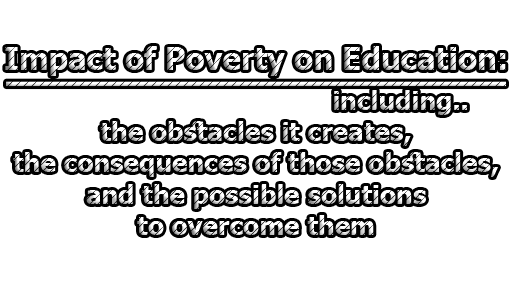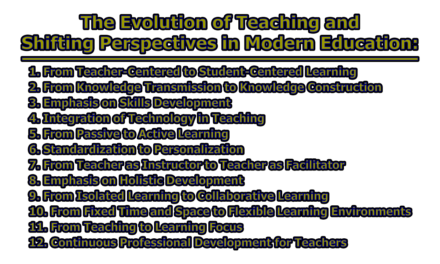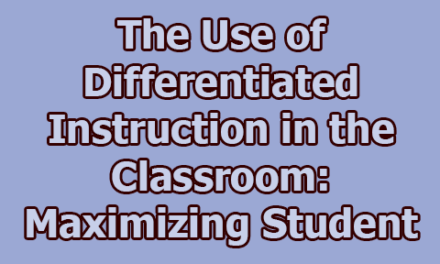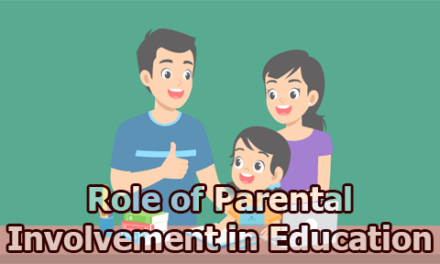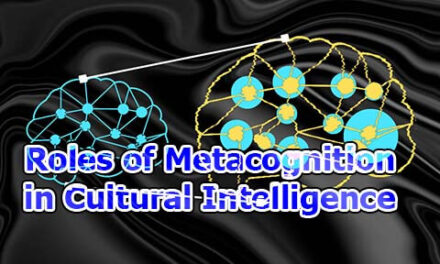Impact of Poverty on Education:
Poverty has always been a significant issue affecting people’s lives around the world, especially in developing countries. It is a pervasive problem that affects every aspect of life, including education. Education is considered one of the most important tools to escape poverty, but poverty itself poses a significant challenge for children to access education, receive a quality education, and excel academically. In this article, we will discuss the impact of poverty on education, including the obstacles it creates, the consequences of those obstacles, and the possible solutions to overcome them.
Obstacles to Education in Poverty:
Poverty poses significant barriers to education at different levels, starting from access to education to educational quality. Some of the most prominent obstacles include:
- Financial constraints: For many families living in poverty, the cost of education, including school fees, transportation, uniforms, and textbooks, is often beyond their means. Parents may be forced to choose between sending their children to school and meeting their daily needs, such as food and shelter. In many cases, families choose to prioritize their basic needs over education, leaving children with little or no access to education.
- Poor infrastructure: Schools in impoverished areas often lack adequate infrastructure, including classrooms, laboratories, libraries, and toilets. This lack of infrastructure leads to overcrowding, limited resources, and poor learning conditions, which in turn affect the quality of education.
- Lack of qualified teachers: Schools in impoverished areas often struggle to attract and retain qualified teachers due to low salaries and poor working conditions. This leads to a shortage of teachers and a high teacher-student ratio, making it difficult for students to receive individual attention and support.
- Health issues: Poverty often leads to poor health conditions, which affect children’s attendance and participation in school. Children living in poverty are more likely to suffer from malnutrition, disease, and other health issues, which can affect their cognitive and physical development.
Consequences of Poverty on Education:
The obstacles mentioned above have significant consequences on education, affecting children’s academic performance and future prospects. Some of the most prominent consequences include:
- Low academic achievement: Children living in poverty often struggle academically, with lower test scores and graduation rates than their peers. They may have poor attendance, low motivation, and limited access to educational resources, all of which affect their academic performance.
- Limited career opportunities: Poor academic performance often limits children’s career opportunities, which perpetuates the cycle of poverty. Children living in poverty may not have the skills or qualifications needed to secure higher-paying jobs, which affects their ability to escape poverty.
- Higher dropout rates: Poverty often leads to high dropout rates, as children may need to work to support their families or may not see the value of education. Dropout rates are higher in impoverished areas, perpetuating the cycle of poverty.
- Social and emotional issues: Poverty can also affect children’s social and emotional well-being, leading to feelings of isolation, low self-esteem, and depression. Children living in poverty may also face bullying, discrimination, and other forms of social exclusion, which can affect their mental health and academic performance.
Solutions to overcome poverty’s impact on education:
There are various solutions to overcome poverty’s impact on education, ranging from government policies to community-based interventions. Some of the most effective solutions include:
- Increasing access to education: Governments and non-governmental organizations can work together to increase access to education for children living in poverty. This includes providing scholarships, school supplies, and transportation to help children attend school.
- Improving infrastructure: Governments can invest in improving school infrastructure, including building new schools, renovating existing schools, and providing resources such as textbooks, computers, and libraries.
- Recruiting and retaining qualified teachers: Governments can provide incentives to attract and retain qualified teachers, including higher salaries, professional development opportunities, and better working conditions. This will help ensure that children receive quality education and individual attention.
- Providing health and nutrition support: Governments and organizations can provide health and nutrition support to children living in poverty, including access to healthcare, nutritious food, and clean water. This will improve their health and well-being, allowing them to attend school and perform better academically.
- Community-based interventions: Communities can also play a vital role in improving education for children living in poverty. This includes creating local educational programs, organizing community libraries, and providing after-school support to help children with homework and other academic tasks.
- Addressing systemic issues: Finally, it is essential to address the systemic issues that perpetuate poverty, including income inequality, discrimination, and lack of access to resources. Governments, non-governmental organizations, and communities can work together to create policies and programs that address these issues and promote social and economic equality.
At the end of the day, we can say that poverty has a significant impact on education, affecting access to education, educational quality, academic performance, and future prospects. It is essential to address the obstacles that poverty creates and provide solutions to improve education for children living in poverty. This requires a collaborative effort from governments, non-governmental organizations, communities, and individuals. By working together, we can create a better future for children living in poverty, ensuring that they have access to quality education and opportunities to escape poverty.
References:
- (2019). Education and Poverty: A Gender Analysis. Retrieved from https://unesdoc.unesco.org/ark:/48223/pf0000370692
- National Center for Education Statistics. (2021). The Condition of Education 2021. Retrieved from https://nces.ed.gov/programs/coe/indicator_cce.asp
- World Bank. (2018). Poverty and Education: Finding the Way Forward. Retrieved from https://www.worldbank.org/en/topic/education/publication/poverty-and-education-finding-the-way-forward
- United Nations Development Programme. (2019). Human Development Report 2019: Beyond Income, Beyond Averages, Beyond Today. Retrieved from http://hdr.undp.org/sites/default/files/hdr2019.pdf
- Save the Children. (2019). A Fair Start: Ensuring All Children Have the Best Chance in Life. Retrieved from https://resourcecentre.savethechildren.net/library/fair-start-ensuring-all-children-have-best-chance-life
- Murnane, R. J., & Duncan, G. J. (2014). Poverty and Inequality in the United States: Evidence from the Panel Study of Income Dynamics and the National Longitudinal Survey of Youth. Annals of the American Academy of Political and Social Science, 651(1), 17-33.
- Lareau, A. (2011). Unequal Childhoods: Class, Race, and Family Life (2nd ed.). Berkeley: the University of California Press.
- Eamon, M. K. (2005). Social-demographic, school, neighborhood, and parenting influences on the academic achievement of Latino young adolescents. Journal of Youth and Adolescence, 34(2), 163-174.
- The Century Foundation. (2016). The Economic Costs of Child Poverty in the United States. Retrieved from https://tcf.org/content/report/economic-costs-child-poverty-united-states/
- National Education Association. (2018). Closing the Opportunity Gap: A Call to Action. Retrieved from https://www.nea.org/assets/docs/Closing_the_Opportunity_Gap.pdf
- Evans, G. W., & Kim, P. (2013). Childhood Poverty and Young Adults’ Allostatic Load: The Mediating Role of Childhood Cumulative Risk Exposure. Psychological Science, 24(9), 1765-1773.
- United Nations. (2020). Sustainable Development Goal 4: Quality Education. Retrieved from https://www.un.org/sustainabledevelopment/education/

Assistant Teacher at Zinzira Pir Mohammad Pilot School and College

